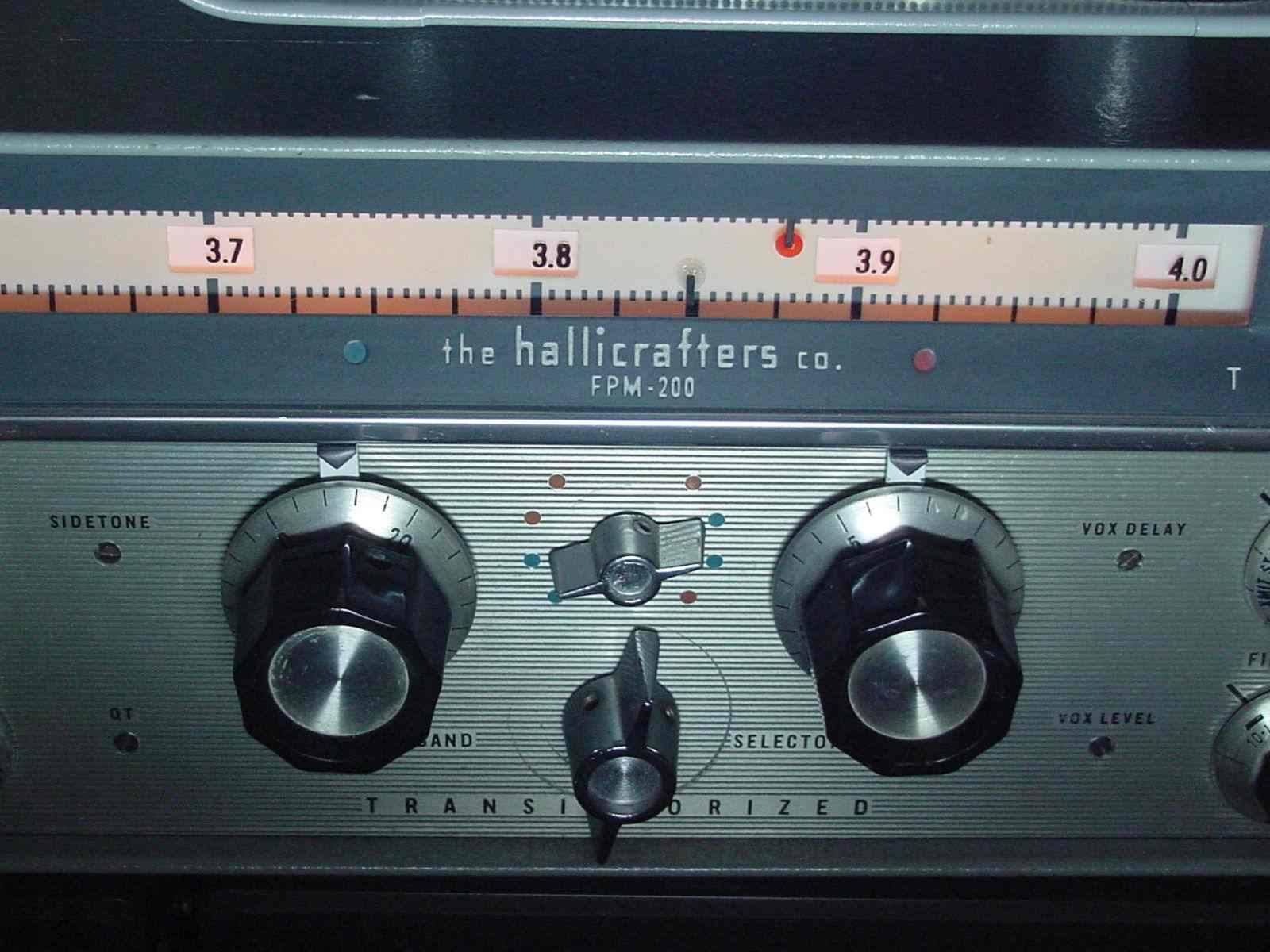Transceiver


|
Front and center on the radio is the Band selector knob which is at lower
center. You will notice that it doesn't have any marking to indicate which
band is being selected. That's because when the knob is rotated the illuminated
frequency marking on the 500Kc band display change to indicate the Mc positions
at every 100Kc marking. Also, to the far left side the band selected will
also be indicated. The PTO selector knob also has no marking's. Only red and blue colored dots. The FPM-200's dual PTO's are color coded. The top tuning indicator is red and the lower tuning indicator is blue. All receiver related controls are located on the left side of the front panel and all the transmitter related controls are on the right side. The PTO selection uses a dual-pointer knob. The colored dots on the left side of the knob relate to which PTO will control the receive frequency and those on the right relate to transmitter PTO control. It's very simple to get familar with since all the controls for that particular operating function of the transceiver are located on one or the other side in agreement with the PTO selector. With the layout of the colored dots the user is able to use either one PTO or the other in both receive or transmit. Basically what we all are used to in modern HF transceivers. The user could also operate split frequency operation, within one 500kc band. This is most often used for DX when you would transmit on their listening frequency and then receive on their transmit frequency. The actual PTO tuning knobs are just to the right and left of center. Their PTO "color" is indicated by the colored dot located above the knob, i.e. blue is left and red is right. The knobs tuning skirt is marked off in 25 evenly divided intervals that each represent 1kc. Therefore, one turn of the PTO knob will change the frequency by 25 kc. This is actually very close to that on the Collins S-line which is around 22 kc per revolution and exactly the same as that of the Drake C-line. So frequency readout is very accurate in todays crowded band conditions. Also, like the Collins and Drake equipment there is a means to calibrate the readout to the nearest 100 kc calibration marker. Above each PTO knob is a small pointer arm. This arm can be rotated left or right to set the dial skirt marker to zero at the nearest 100 kcs calibration point. Thus maintaining high frequency readout and accuracy. Also visable on this photo are four small screw driver adjustments. These are labeled and correspond to the Side Tone level (transmit CW side tone level), QT (often know as Anti-Vox), Vox Delay and Vox Level. These are most often set-and-forget type controls and thus were relegated as small screw driver adjustments. |